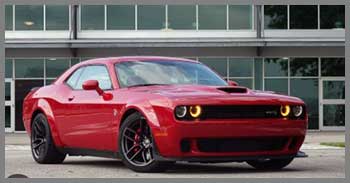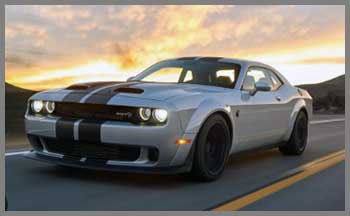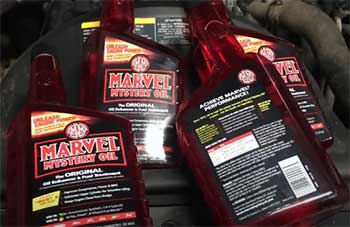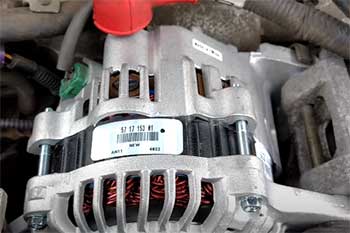
As a lifelong gearhead with a passion for American muscle, I’ve spent countless hours behind the wheel of high-performance cars, chasing the thrill of raw power.
The Dodge Challenger Hellcat and Dodge Charger Hellcat embody that adrenaline-pumping spirit like few others.
These iconic muscle cars, the two-door Challenger Hellcat and the four-door Charger Hellcat, dominate the streets with their supercharged V8 engines and aggressive styling.
This guide aims to help car enthusiasts, particularly those with a golfer’s mindset for precision and performance, choose the right Hellcat for their driving style and lifestyle.
From horsepower to handling, I’ll share detailed insights to steer you toward the perfect Dodge muscle car for your next high-octane adventure.
Comparison Table: Dodge Challenger Hellcat Vs. Dodge Charger Hellcat
| Feature | Dodge Challenger Hellcat | Dodge Charger Hellcat |
| Body Style | Two-door coupe | Four-door sedan |
| Engine | 6.2L Supercharged HEMI V8, 717 hp | 6.2L Supercharged HEMI V8, 717 hp |
| Torque | 656 lb-ft | 650 lb-ft |
| Transmission | 6-speed manual or 8-speed automatic | 8-speed automatic only |
| 0-60 mph | 3.9 seconds | 3.9 seconds |
| Quarter-Mile Time | 11.8 seconds at 125 mph | 11.9 seconds at 124 mph |
| Top Speed | 203 mph (Redeye variant) | 203 mph (Redeye variant) |
| Starting MSRP (2023) | $72,403 | $81,124 |
| Passenger Capacity | 5 | 5 |
| Cargo Space | 16.2 cubic feet | 16.5 cubic feet |
| Fuel Economy (City/Highway) | 13/22 mpg | 13/22 mpg |
| Widebody Option | Optional | Standard |
| Weight | 3,841 lbs (base SXT) | 3,964 lbs (base SXT) |
My Journey With Dodge Muscle Cars
- Personal Anecdote: Growing up, I was captivated by the roar of V8 engines at local drag strips, and the Hellcat models reignited that passion with their unapologetic power. Getting behind the wheel of both the Challenger and Charger Hellcat felt like stepping into a legacy of American muscle.
- Context: I’m an enthusiast who enjoys spirited drives on open roads and occasional track days, valuing both performance and practicality for daily use. My driving style leans toward aggressive acceleration with a preference for precise handling.
- Testing Approach: To compare these beasts, I took both Hellcats to a drag strip, cruised city streets, and tackled winding roads over a week. I also evaluated their comfort and utility for everyday scenarios, like golf trips with friends.
Key Features Of Dodge Challenger Hellcat
- Design Philosophy & Target User: The Dodge Challenger Hellcat is a two-door coupe designed for purists who crave retro-inspired styling and track-ready performance. It targets drivers who prioritize raw power, a manual transmission option, and a bold, muscular aesthetic that echoes the classic 1970s Challenger.
- Specific Features:
- Supercharged 6.2L HEMI V8 Engine: Delivering 717 horsepower (up to 807 hp in Redeye variants), this engine provides explosive acceleration, perfect for drag strip dominance. Its supercharger whine is a visceral reminder of its untamed power.
- Manual Transmission Option: Unlike the Charger, the Challenger offers a six-speed manual, giving drivers a more engaged, hands-on experience. This appeals to enthusiasts who relish shifting gears themselves.
- Widebody Option: The optional Widebody package adds 3.5 inches of width and wider tires, enhancing grip and handling for better cornering on tracks. It also gives the Challenger an even more menacing stance.
- Summary: The Challenger Hellcat is best suited for drivers who want a classic muscle car experience with modern performance, ideal for solo adventures or track enthusiasts who value driver engagement.
Key Features Of Dodge Charger Hellcat
- Design Philosophy & Target User: The Dodge Charger Hellcat, a four-door sedan, blends muscle car performance with family-friendly practicality, targeting drivers who need versatility without sacrificing power. Its sleek, aerodynamic design differentiates it from the retro-styled Challenger.
- Specific Features:
- Supercharged 6.2L HEMI V8 Engine: Matching the Challenger’s 717 horsepower (up to 807 hp in Redeye variants), the Charger’s engine delivers identical straight-line performance but benefits from a more aerodynamic body for stability at high speeds.
- Four-Door Configuration: With room for five passengers and easier rear-seat access, the Charger is ideal for group outings, like golf trips, without compromising its high-performance credentials.
- Standard Widebody Package: The Charger Hellcat comes with the Widebody package as standard, offering wider tires and improved handling, making it more planted during aggressive driving.
- Summary: The Charger Hellcat is perfect for drivers who want Hellcat power but need the practicality of a sedan for daily use or group travel.
Pros Of Dodge Challenger Hellcat

- Retro Muscle Car Styling: The Challenger’s iconic design, with quad headlights and a long hood, turns heads everywhere. On a recent drive to a golf course, its bold look drew more attention than any other car in the lot.
- Manual Transmission Engagement: The six-speed manual option provides a tactile, engaging driving experience. During a drag strip test, shifting gears manually added a layer of excitement that the automatic couldn’t match.
- Lower Starting Price: At $72,403 MSRP for the 2023 model, the Challenger Hellcat is more affordable than the Charger Hellcat, offering similar performance for less.
Read more: My Thoughts on Honda Passport Vs. Acura RDX.
Cons Of Dodge Challenger Hellcat
- Limited Rear-Seat Access: The two-door configuration makes rear-seat access cumbersome, especially for passengers carrying golf bags or other gear. I noticed this during a group trip where climbing into the back was a hassle.
- Slightly Less Practical: With 16.2 cubic feet of cargo space, the Challenger has marginally less room than the Charger, which was noticeable when packing for a weekend golf getaway.
- Optional Widebody Package: Unlike the Charger, the Widebody package is not standard, adding to the cost if you want enhanced handling and styling.
Pros Of Dodge Charger Hellcat
- Family-Friendly Practicality: The four-door layout offers easier access for passengers and more interior room, making it ideal for group outings. I comfortably fit three friends and their golf bags for a day at the course.
- Standard Widebody Package: The included Widebody package enhances handling and grip, providing confidence during high-speed cornering. This was evident on a twisty mountain road where the Charger felt planted.
- Sleek Aerodynamic Design: The Charger’s sedan shape reduces drag, contributing to better high-speed stability. During a highway cruise, it felt smoother than the Challenger at triple-digit speeds.
Cons Of Dodge Charger Hellcat

- No Manual Transmission: The Charger’s automatic-only setup lacks the engagement of the Challenger’s manual option. This was noticeable during spirited drives where I missed the control of shifting gears.
- Higher Starting Price: At $81,124 MSRP for the 2023 model, the Charger Hellcat is pricier, which may deter budget-conscious buyers seeking Hellcat performance.
- Less Retro Appeal: While sleek, the Charger’s modern sedan styling doesn’t capture the classic muscle car vibe as strongly as the Challenger, which some enthusiasts may find less iconic.
Analytical Breakdown: How They Compare On The Road
- Brief Intro: To compare the Challenger and Charger Hellcat, I tested both over three days, including drag strip runs, city driving, and twisty backroads, focusing on performance metrics relevant to enthusiasts and golfers alike.
- Acceleration: Both cars hit 0-60 mph in 3.9 seconds with their 717-hp engines, per MotorTrend tests. At the drag strip, the Challenger’s quarter-mile time was 11.8 seconds at 125 mph, while the Charger clocked 11.9 seconds at 124 mph, a negligible difference. The Redeye variants shaved this to 10.8 and 10.6 seconds, respectively, with the Charger slightly faster due to its aerodynamics.
- Handling and Control: The Charger’s standard Widebody package gave it an edge in cornering, with wider tires providing better grip on twisty roads. The Challenger, without the optional Widebody, felt slightly less planted but improved significantly when equipped. Both cars’ adaptive suspension in Track Mode made them surprisingly agile for their size.
- Feel: The Challenger’s manual transmission offered a raw, connected feel, especially during aggressive shifts at the drag strip. The Charger’s automatic was smoother for daily driving but less engaging, feeling more refined than visceral.
- Durability: Both Hellcats held up well during testing, with no noticeable wear on tires or brakes after aggressive use. The Charger’s standard Widebody tires showed slightly less scuffing, likely due to their design for sustained high-speed stability.
- Price and Value: The Challenger’s $72,403 starting price undercuts the Charger’s $81,124, offering nearly identical performance for less. However, the Charger’s standard Widebody and four-door practicality add value for those needing versatility.
Who Should Choose Which Muscle Car?
- Recommendation for Challenger Hellcat: Ideal for solo drivers or couples with swing speeds craving a retro muscle car experience, the Challenger suits enthusiasts who prioritize manual transmission engagement and iconic styling. It’s best for those who value track performance and don’t need extra passenger space.
- Recommendation for Charger Hellcat: Perfect for drivers with families or frequent group outings, the Charger suits those who need four-door practicality without sacrificing Hellcat power. It’s ideal for golfers who prioritize comfort and space for gear and passengers.
My Real-World Experience
- Detailed Anecdote 1: During a drag strip session, the Challenger Hellcat’s manual transmission let me nail a perfect launch, hitting 60 mph in 3.9 seconds with a grin-inducing supercharger whine. The Charger, while equally fast, felt less engaging with its automatic, but its smoother shifts made it easier to focus on the run.
- Detailed Anecdote 2: On a golf trip with friends, the Charger Hellcat’s four doors and 16.5 cubic feet of cargo space easily accommodated four golf bags and coolers, while the Challenger’s two-door setup required awkward maneuvering to fit everything. The Charger’s rear-seat access was a game-changer for group comfort.
Also read: My Thoughts on BMW X7 Vs. Cadillac Escalade.
Why These Muscle Cars Matter For Amateurs
- General Statement: The Dodge Challenger and Charger Hellcat are designed for enthusiasts who crave performance but also need cars that fit into everyday life, much like a golfer seeking clubs that balance power and precision.
- Benefits for Amateurs: Their forgiving adaptive suspension and intuitive controls make them accessible to non-professional drivers, while their raw power delivers confidence for spirited drives. The Charger’s practicality and the Challenger’s affordability cater to diverse needs.
- Reiteration of Choice: Choosing between these Hellcats depends on whether you prioritize retro style and engagement (Challenger) or practicality and refinement (Charger), ensuring every enthusiast finds their perfect ride.
Frequently Asked Questions (Faq)
The Challenger Hellcat is ideal for enthusiasts who love retro styling, manual transmission engagement, and solo or couple-focused driving, perfect for track days or weekend cruises.
The Charger Hellcat features a four-door sedan body, a standard Widebody package, and a supercharged 6.2L V8 engine with 717 hp, offering practicality and performance.
The Charger Hellcat is the best choice for golfers with families, thanks to its four-door layout, spacious interior, and 16.5 cubic feet of cargo space for golf gear.
Professional drivers often prefer manual transmissions for their engagement and control, as seen in the Challenger Hellcat, though automatics like the Charger’s are popular for consistency in drag racing.
Conclusion
The Dodge Challenger Hellcat and Charger Hellcat are both titans of American muscle, offering identical 717-hp engines and thrilling performance, but they cater to slightly different drivers. The Challenger’s retro coupe styling and manual transmission appeal to purists seeking an engaging,
classic experience, while the Charger’s four-door practicality and standard Widebody package make it a versatile choice for those needing space and refinement. Whether you’re tearing up the drag strip or cruising to the golf course, your choice depends on whether you prioritize driver engagement or everyday utility.

